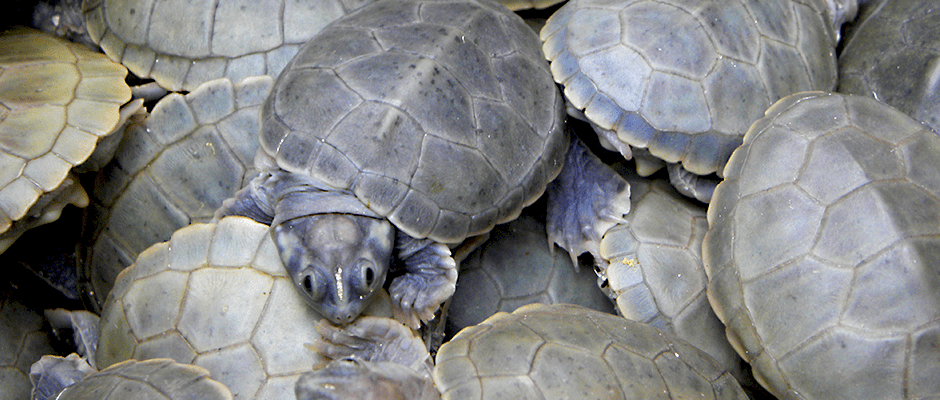Share this article
WSB: A low-cost approach boosts female Amazon River turtles
Amazon River turtles’ greatest threat is illegal harvesting, and since females, which grow larger and are easier to capture than males, are particularly targeted, concerns about the species’ future are even greater.
In Brazil’s Mamirauá Reserve, researcher Carla Eisemberg found a further problem: a key sandbank where the turtles nested produced mostly males.
She also found a possible solution: plastic.
In a paper published in the Wildlife Society Bulletin, Eisemberg and her team wrote about their findings using black plastic covers to increase female hatchlings in six-tubercle Amazon River turtles (Podocnemis sextuberculata).
“We were trying to do some research with the Amazon River turtles that was very applied,” said Eisemberg, then an undergraduate at Brazil’s Federal University of Minas Gerais and now the International Union for Conservation of Nature’s red list authority coordinator for freshwater turtles and tortoises.
Like many turtles, these river turtles have temperature-dependent sex determination. Cooler temperatures produce more male hatchlings. Warmer temperatures produce more females.
While sea turtle biologists worry about climate change yielding too many females, Eisemberg had the opposite concern in the Amazon.
Previous conservation efforts had focused on removing the eggs from the cool sands, allowing them to hatch and returning the hatchlings to the wild. That could be labor intensive, and it required handling the eggs and the hatchlings, raising concerns about accidental mortality as a result.
Eisemberg wondered if she could find a low-cost alternative that local managers could easily make use of that wouldn’t disturb the nests. She and her team tried covering the nests with black plastic, absorbing the Amazon heat and trapping it in better than the white sands of the sandbank.
It worked. The nests under the plastic were one degree Celsius warmer than the uncovered nests, and they produced 37 percent more females than the control nests.
“It’s much more cost-effective than removing the eggs,” Eisemberg said, and the risk of mortality may be lower, too.
TWS members can log into Your Membership to read this paper in the Wildlife Society Bulletin. Go to Publications and then Wildlife Society Bulletin.
Header Image: Researchers in Brazil used plastic covers to increase nest temperatures and boost female Amazon River turtle hatchlings. ©Michael Kelly








